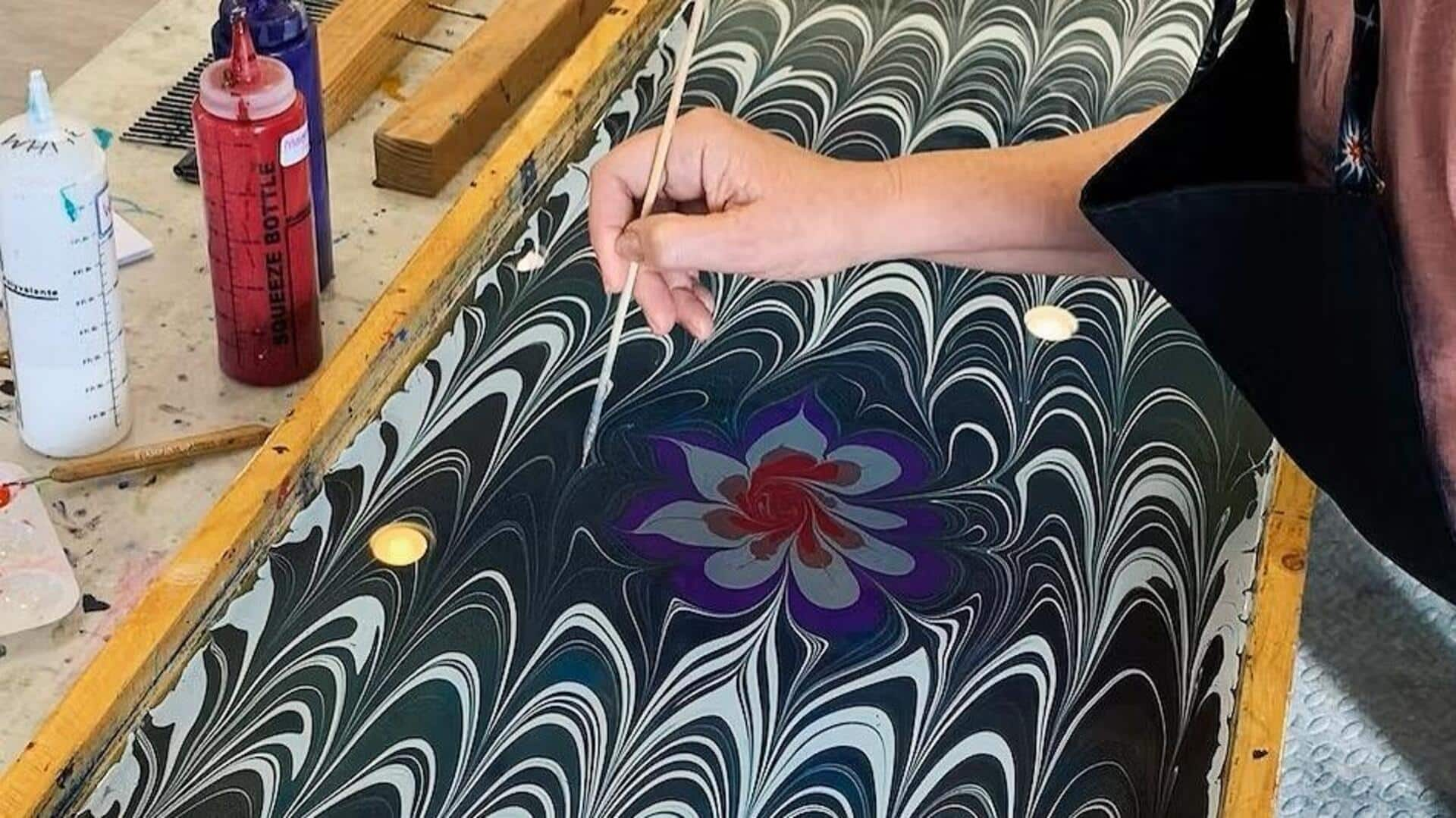
Introduction to water marbling art techniques
What's the story
Water marbling is such a fascinating art form. The artist creates intricate patterns on the surface of water and transfers them onto paper or fabric. It has been practiced for centuries and continues to fascinate artists and enthusiasts alike. Manipulating colors on water, artists produce unique designs that can't be replicated exactly. The process requires patience, precision, and a keen eye for detail.
Basics
Understanding the basics of water marbling
Water marbling starts off by preparing a water bath mixed with a thickening agent, like carrageenan or methylcellulose. This forms a viscous surface where paints can float without sinking. Artists use special marbling paints that spread easily on this surface. Once the colors are applied, various tools, like combs or styluses, are used to manipulate the paint into desired patterns before transferring it onto paper or fabric.
Tools
Essential tools for water marbling
To begin water marbling, you'll require certain tools such as marbling paints, a tray to hold the water bath, thickening agents like carrageenan, and different combs or styluses for creating patterns. Brushes are used to apply paint on the water's surface while droppers control paint flow. Having these tools in place helps you execute your artistic vision smoothly.
Patterns
Techniques for creating patterns
Creating patterns in water marbling involves various techniques such as stone patterning by dropping paint directly onto the surface or using combs to create intricate designs like chevrons or peacock feathers. While each technique takes some practice to master, it opens up endless possibilities in terms of design complexity and uniqueness.
Tips 1
Tips for successful water marbling projects
For successful projects, make sure your workspace is clean and draft-free, as they can disturb the delicate balance of floating paints. Experiment with various color combinations, but avoid overcrowding your palette, as too many colors may muddy your design. Always test new techniques on small pieces before committing them to larger projects, ensuring desired outcomes without wasting materials.